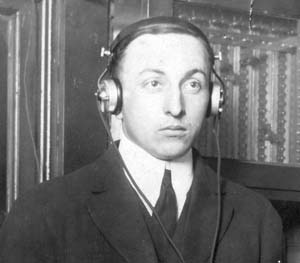Leo C. Young

Figure 1: Early photograph of Young wearing radio headphones, date unknown.
Leo C. Young
Leo Crawford Young ( ☆ January 12, 1891 near Van Wert, Ohio – † January, 16 1981 in Forestville, Maryland) was an American radio engineer.
Young was interested in wireless telegraphy in his teenage years. He constructed his first radio receiver in 1905. Young enlisted as a radio specialist in the Naval Reserve Force during World War I. He worked under the direction of Dr. A. Hoyt Taylor, then District Director of Naval Communications. Since 1918 Young was ordered to Washington to join in the establishment of the Naval Aircraft Radio Laboratory.
Both men were reunited in 1919 when Taylor was placed in command of the Naval Aircraft Radio Laboratory. During 1922, Taylor and Young had registered an historic observation of high-frequency radio waves reflecting from the wooden steamer Dorchester on the Potomac River as it passed between a transmitter and a portable receiver. This led to a CW-radar development project.
In 1930, Leo Young was placed in charge of a research project at the Naval Research Laboratory (NRL) that resulted in the first detection of aircraft by reflected radio waves. Four years later, he was responsible for research that led to the development of the first system using radio pulses for range determination by runtime measuring.
Source: Historical Manuscripts, Navy Department Library, Naval History and Heritage Command, Washington, DC, Leo C. Young Collection. (online)
